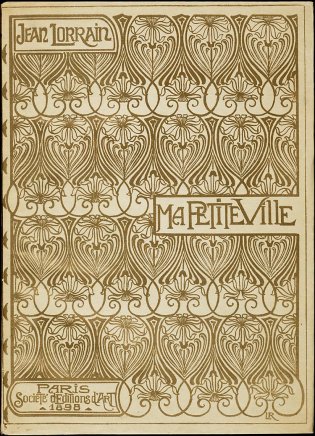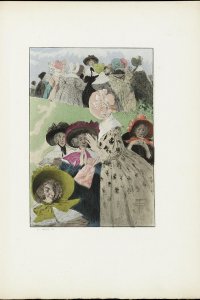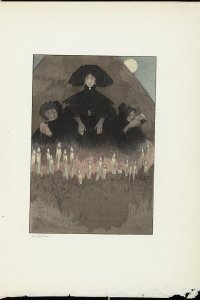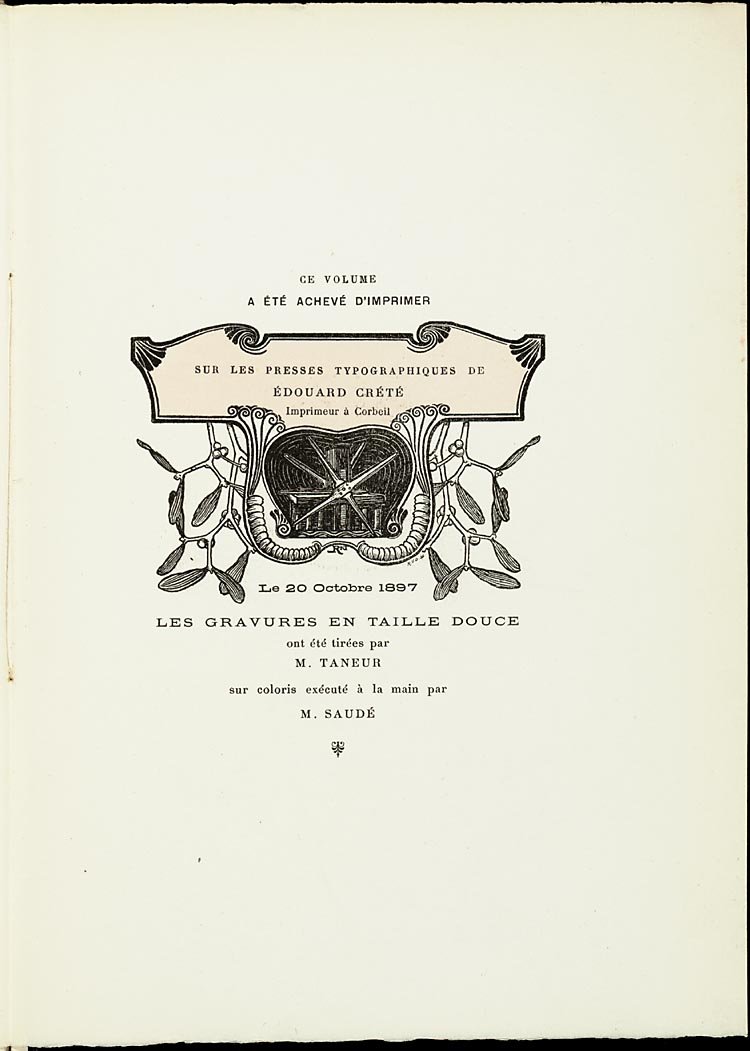Ma petite ville ; Le miracle de Bretagne ; Un veuvage d'amour
Year: 1898
Author: Jean Lorrain (1855 - 1906)
Artist: Manuel Orazi (1860 - 1934)
Publisher: Société française d'éditions d'art
Art nouveau
In Ma petite ville, Jean Lorrain described the little town where he spent his childhood. Fécamp is actually called Montforn in Bretagen (Brittany) in the novel. The book also contains two other- and longer- stories: Le miracle de Bretagne and Un veuvage d'amour. The edition of the book from 1898 is typical for French bibliophile book editions of that period. The jacket and the decorations may have been produced by the same hand, but their styles don't match exactly. Léon Rudnicki (the title page erroneously lists his name as Rudincki) created a jacket design in gold printed on white paper. It was supposed to create the impression of a deluxe vellum binding, printed in gold. The art nouveau patterns on the front cover, spine and rear cover are different, but each is based on floral patterns, applied in repeated symmetrical rows. The engravings on the other hand are more traditional: opening and closing vignettes and illustrated initials with viewing holes to the village with a windmill, bridge or other buildings, decorated with floral borders.
The publisher, the Société française d'éditions d'art, also published reference books in the fields of archaeology and art history. This book is one of their more bibliophile productions, appearing in an edition of 300 copies. The light, erotic style of painter, draughtsman and illustrator Manuel Orazi is an excellent match for this anecdotal work by Lorrain. Orazi was born in Rome in 1860, and died in Paris in 1934. He worked for many magazines, but also illustrated novels, such as Aphrodite by Pierre Louÿs (1912) and Les fleurs du mal by Baudelaire (1934). The precise and sensitive aquarelles were adapted for reproduction (steel engraving) by Frédéric Massé, printed by Taneur and subsequently hand-coloured by Saudé. The colophon notes that the book was finished on 20 October 1897. The title page and the jacket however identify its year of publication as 1898.

![Page [21] with text and illustration](/sites/default/files/styles/galerie/public/images/ma-petite-ville-p21.jpg?h=120e9c78&itok=0S4pVcHT)


